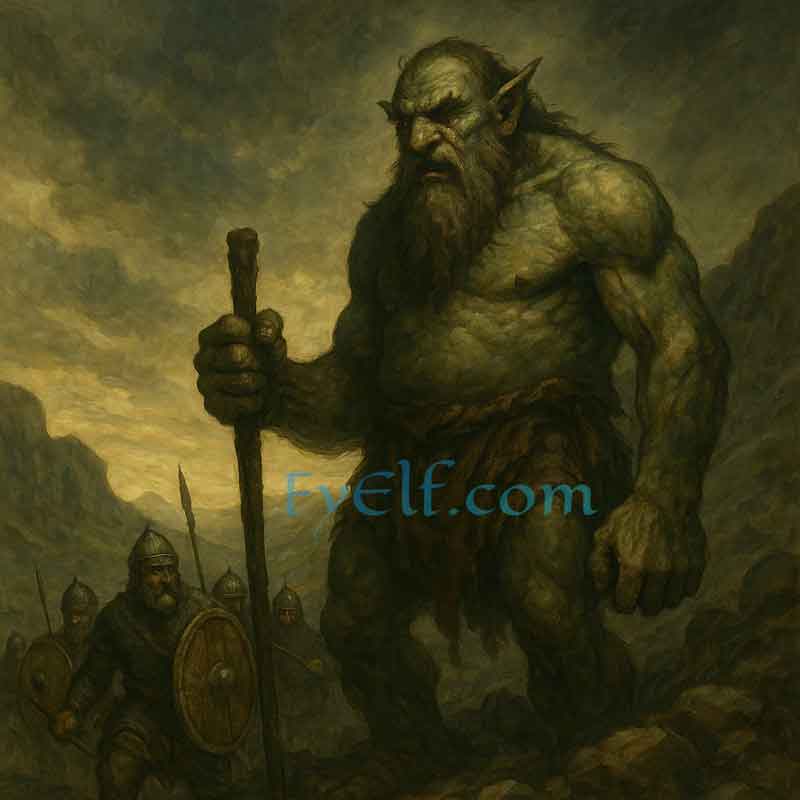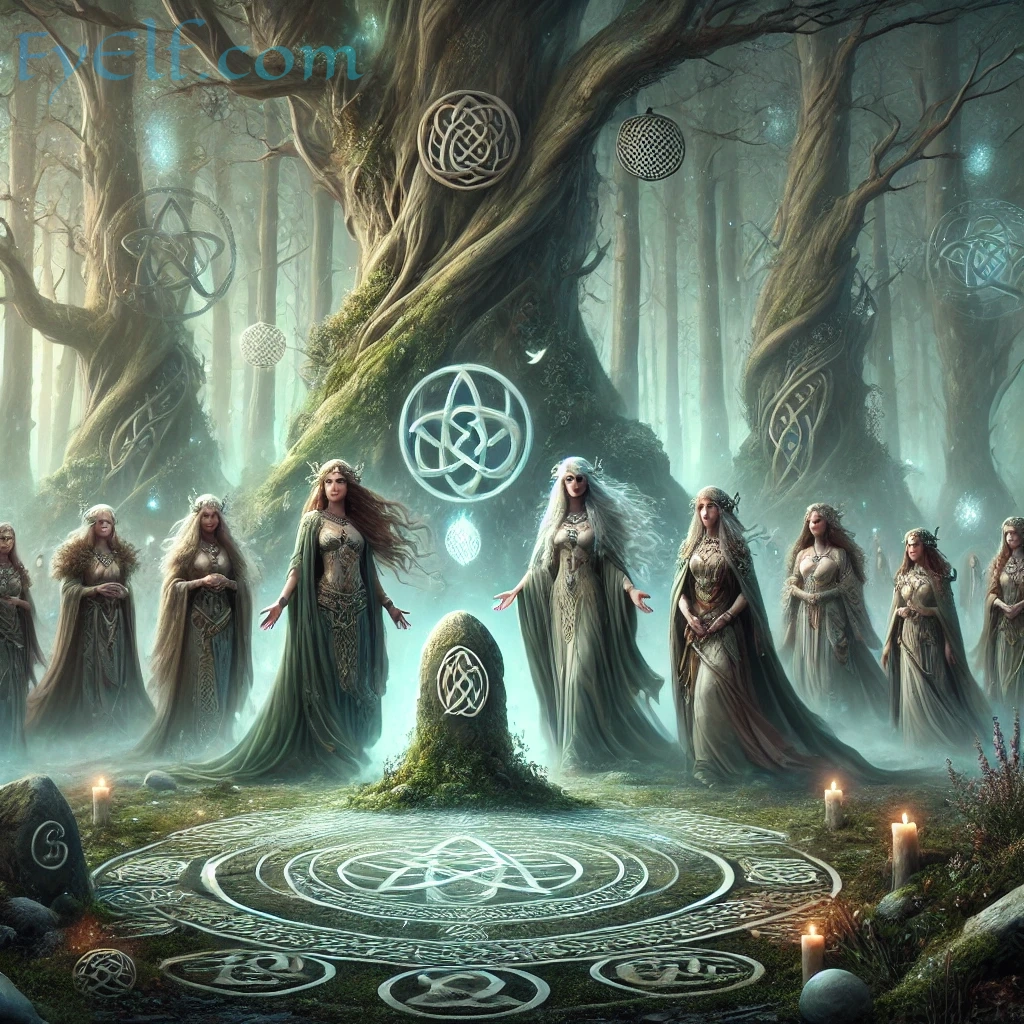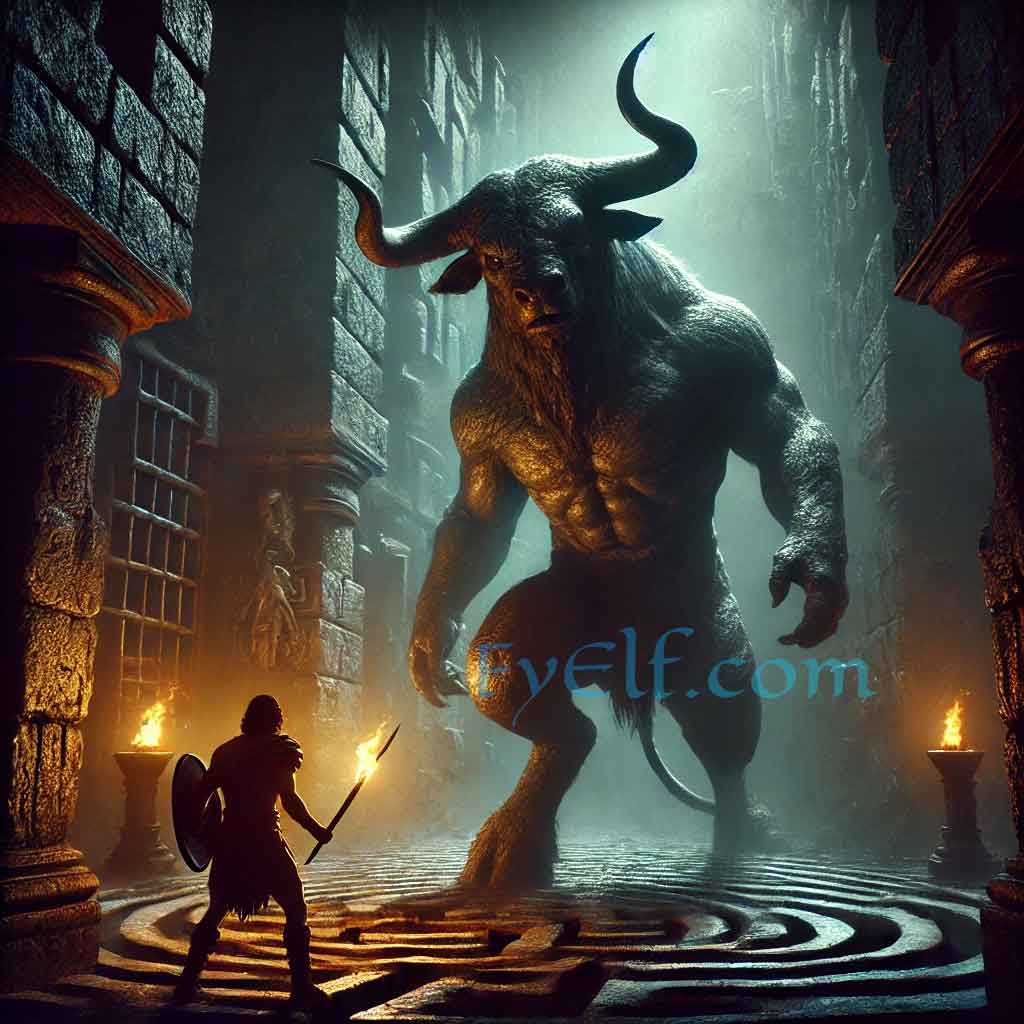Who Were the Fomorians?
In the misty world of Irish mythology, few beings inspire as much intrigue and dread as the Fomorians. Described as giants, dark gods, and chaotic forces, they were the primordial adversaries of Ireland’s divine tribes, most famously the Tuatha Dé Danann. To the early Irish storytellers, the Fomorians embodied the wild and untamed aspects of nature — storms, famine, disease, and the crushing weight of tyranny.
But who exactly were these fearsome beings, and why do they remain so central to Irish myth? To answer this, we must dive deep into Ireland’s oldest legends, where gods, heroes, and monsters clashed to shape the fate of the island.
Origins of the Fomorians
The etymology of Fomorian (Old Irish Fomoire) is debated. Many scholars connect it to fo muire (“under the sea”), suggesting they were sea demons or beings who arrived from across the waters. Another theory links the name to fo mór (“under great” or “giant”), reinforcing their image as colossal beings.
In myth, the Fomorians were said to have dwelled in the dark, chaotic spaces at the edges of the world: beneath the sea, in storm-clouds, and in remote strongholds. They represented all that threatened early agricultural societies — harsh weather, failed harvests, and predatory raids.
The Fomorian Appearance: Giants and Monsters
Fomorians were rarely depicted as purely human. Instead, their descriptions vary:
- One-eyed, one-armed, one-legged giants symbolizing imbalance.
- Sea monsters with grotesque, hybrid forms.
- Dark gods capable of wielding devastating powers.
This monstrous imagery emphasized their role as personifications of chaos. Yet, not all Fomorians were portrayed as completely evil — some intermarried with the Tuatha Dé Danann, creating a complex relationship between order and chaos.
The Tuatha Dé Danann vs. the Fomorians
The mythological cycles describe constant conflict between the Tuatha Dé Danann (the divine race of light, wisdom, and magic) and the Fomorians (forces of darkness, oppression, and destruction).
This opposition mirrors a recurring Indo-European theme: the battle between order and chaos. Just as the Olympians fought the Titans in Greek mythology, the Tuatha Dé Danann fought the Fomorians for dominion over Ireland.
The Battle of Mag Tuired: A Clash of Gods
The most famous confrontation between the Tuatha Dé Danann and the Fomorians was the Second Battle of Mag Tuired.
- The Fomorians’ Tyranny: Under King Balor and his allies, the Fomorians demanded oppressive tributes of grain, cattle, and children from the Tuatha Dé Danann.
- Nuada and the Tuatha Dé Danann: Led by King Nuada (and later the god Lugh), the Tuatha resisted.
- The Battle: A cataclysmic war erupted. Balor unleashed his dreaded “evil eye,” which destroyed everything it gazed upon. But Lugh, the young hero and god of many skills, struck Balor down with a sling stone, ending his reign of terror.
This victory secured the Tuatha Dé Danann’s dominance over Ireland — but the memory of the Fomorians endured.
Balor of the Evil Eye: The Most Famous Fomorian
No discussion of the Fomorians is complete without Balor, their most infamous king.
- The Evil Eye: Balor possessed a single eye that caused death and destruction when opened. To protect others, his eyelid was so heavy it required attendants to lift it.
- Prophecy and Doom: A prophecy foretold that Balor would be killed by his grandson. To prevent this, he locked his daughter Ethniu away. But she bore a son, Lugh, who ultimately fulfilled the prophecy by slaying Balor in battle.
Balor’s tale reflects common mythological motifs, including the doomed king, destructive vision, and fate’s inevitability.
Fomorian Kings and Leaders
While Balor dominates the legends, other notable Fomorian figures appear:
- Elatha – A noble Fomorian, sometimes portrayed as fair and just, and father of Bres.
- Bres – Born of a Fomorian father (Elatha) and a Tuatha Dé Danann mother, Bres became king of the Tuatha but ruled with cruelty, demanding tribute to the Fomorians.
- Indech – Another Fomorian leader defeated at Mag Tuired.
These figures illustrate how Fomorians were not purely monstrous — they could also embody political corruption, tyranny, and greed.
Symbolism of the Fomorians
The Fomorians carried deep symbolic meaning in Irish culture:
- Chaos vs. Order – They were the destructive counterpart to the Tuatha Dé Danann’s harmony.
- Natural Forces – Storms, famine, and plagues personified.
- Tyranny – Oppressive rulers who drained resources, echoing the struggles of early Irish tribes against foreign invaders.
- The Cycle of Conflict – A reminder that balance between creation and destruction is essential in myth and life.
Comparisons to Other Mythologies
The Fomorians can be compared to similar mythic foes in other cultures:
- Greek Titans – Primordial giants overthrown by the Olympians.
- Norse Jötnar (Giants) – Chaotic beings opposing the Aesir gods.
- Mesopotamian Tiamat – The chaos dragon slain by Marduk.
These parallels highlight the universal human struggle to understand and narrate the forces of destruction in the natural world.
Fomorians in Later Folklore
Even after Christianity took hold in Ireland, echoes of the Fomorians persisted. They became associated with demons, pirates, and other raiders in folk memory. Some scholars suggest that their sea-based identity reflects real historical threats, such as Viking invasions.
The Legacy of the Fomorians
The Fomorians endure in Irish cultural memory not just as villains but as essential mythic figures. They symbolize the trials faced by humanity — famine, invasion, and the unpredictability of life. Their battles with the Tuatha Dé Danann dramatize the eternal struggle between destruction and renewal, a theme as relevant today as it was in ancient times.
This cultural legacy continues to inspire Irish art and symbolism, from ancient manuscripts to modern expressions in Celtic jewelry, where knotwork and sacred motifs still carry echoes of myth.
Why the Fomorians Still Matter
The Fomorians are more than just mythical giants; they are powerful metaphors for the challenges of existence. Through stories of Balor’s evil eye, Bres’s tyranny, and epic battles at Mag Tuired, they remind us of humanity’s enduring confrontation with fear, chaos, and mortality.
For lovers of Celtic heritage and mythology, the Fomorians remain a fascinating glimpse into how the Irish envisioned the forces that shaped their world.




